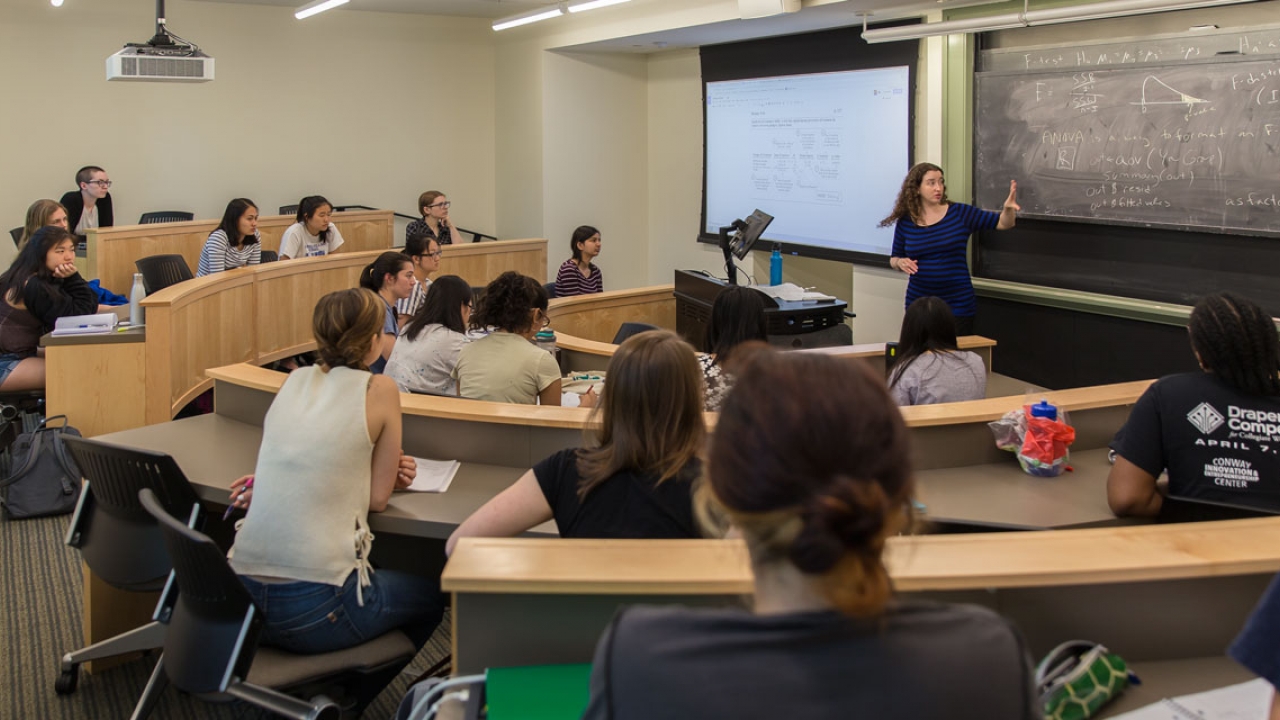New Statistics Minor Coming to Wellesley This Fall

Wellesley students will have a new opportunity to study the art and science of drawing inferences from data when the College rolls out a minor in statistics this fall. Students who declare the minor will learn both the theoretical foundations of statistics as well as applied data analysis. They will be equipped to glean valuable information from today’s data avalanche in a range of fields—medicine, sociology, law, and economics, to name a few.
Wellesley took a critical step toward preparing for the minor by expanding the role of statistics in research and teaching at the College with the founding of the Quantitative Analysis Institute (QAI) in 2013. Cassandra Pattanayak was hired as the Jack and Sandra Polk Guthman ’65 director of the institute, and she became a faculty member in mathematics and quantitative reasoning in spring 2016.
With the fall 2016 addition of Qing (Wendy) Wang, assistant professor of mathematics, to the faculty team in statistics, the math department was able to add the minor.
“We were ready—two highly qualified people gave us the capacity to offer enough courses to create a minor in statistics,” said Megan Kerr ’89, professor of mathematics and chair of the department. “Students now have the option of having a minor in statistics whether they major in biology, economics, political science, or other disciplines.”
Pattanayak, who runs a student internship program and summer classes in applied statistics at QAI, said the statistics minor will supply graduates with analytical skills that apply to a broad range of fields.
“We’re in a data-driven world, and industry faces big challenges in analyzing and manipulating tons of data to produce conclusions,” she said. “[Students] will take what they learn here and apply it in the outside world. The field of statistics is an increasingly powerful lens for observation and interpretation in academia, public policy, science, industry, and life.”
Indeed, the U.S. Bureau of Labor Statistics reports that from 2014 to 2024, employment of statisticians is projected to grow 34 percent, which the bureau characterizes as “much faster than average.” In addition, the McKinsey Global Institute reported in December 2016 that the volume of data doubles every three years and will continue to expand thanks to information from digital platforms, wireless sensors, virtual-reality applications, and cell phones.
“Big Data” surrounds us even when we don’t realize it. Fantasy football and baseball fans spend hours calculating scores and team standings using statistics and mathematics. Forecasters predict weather using algorithms based on mathematical and statistical formulas. Traders on Wall Street use algorithms to tell investors when to buy, when to sell.
Oscar Fernandez, assistant professor of mathematics, likens the competition among companies to hire and train people to analyze large data sets to an arms race. “There are potential gold mines hidden in some data sets that are only accessible to those who know how to unravel and study them,” he said.



